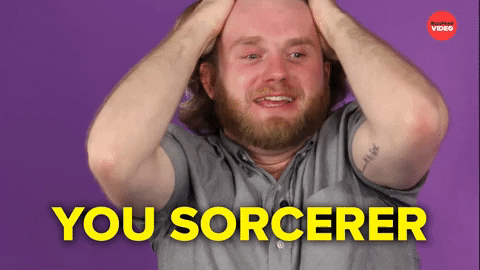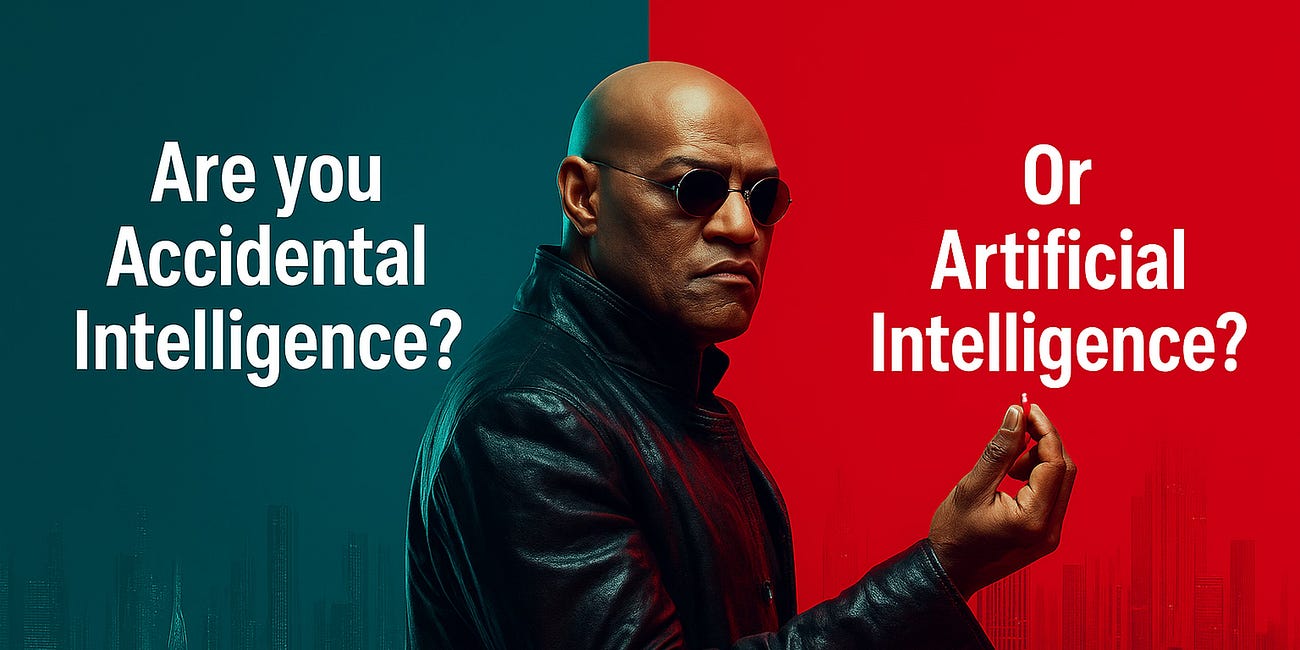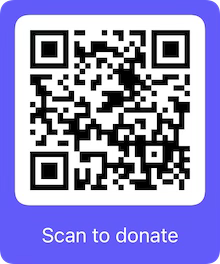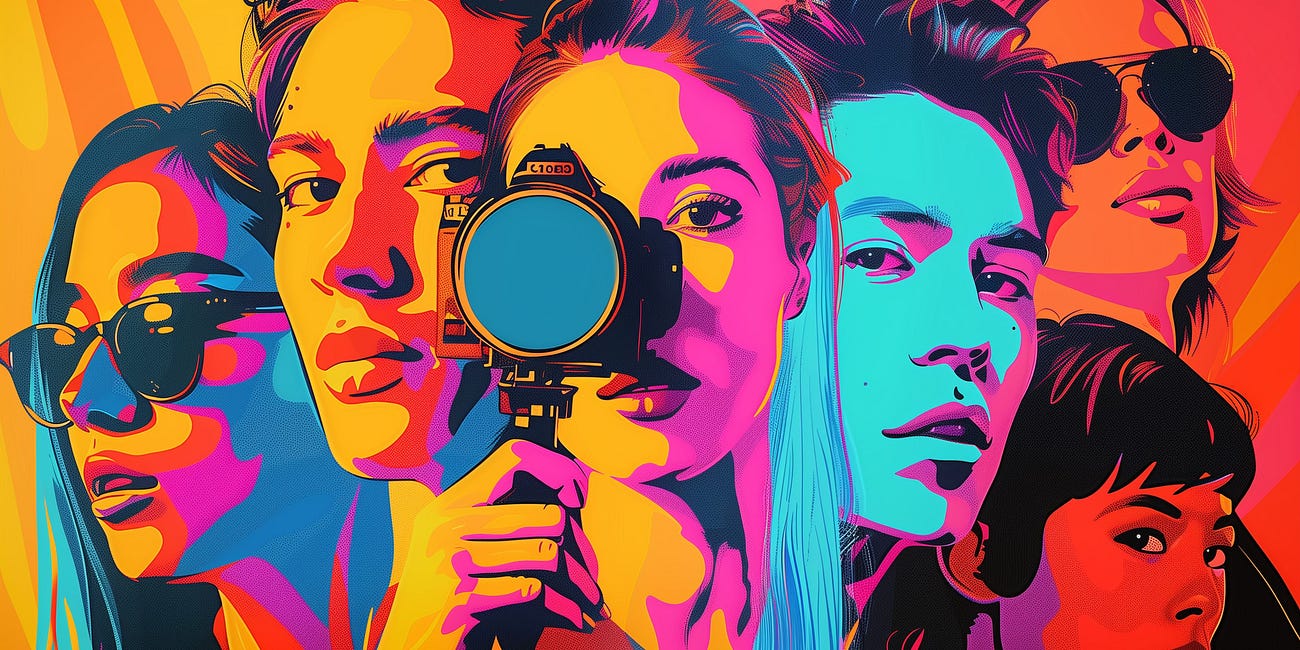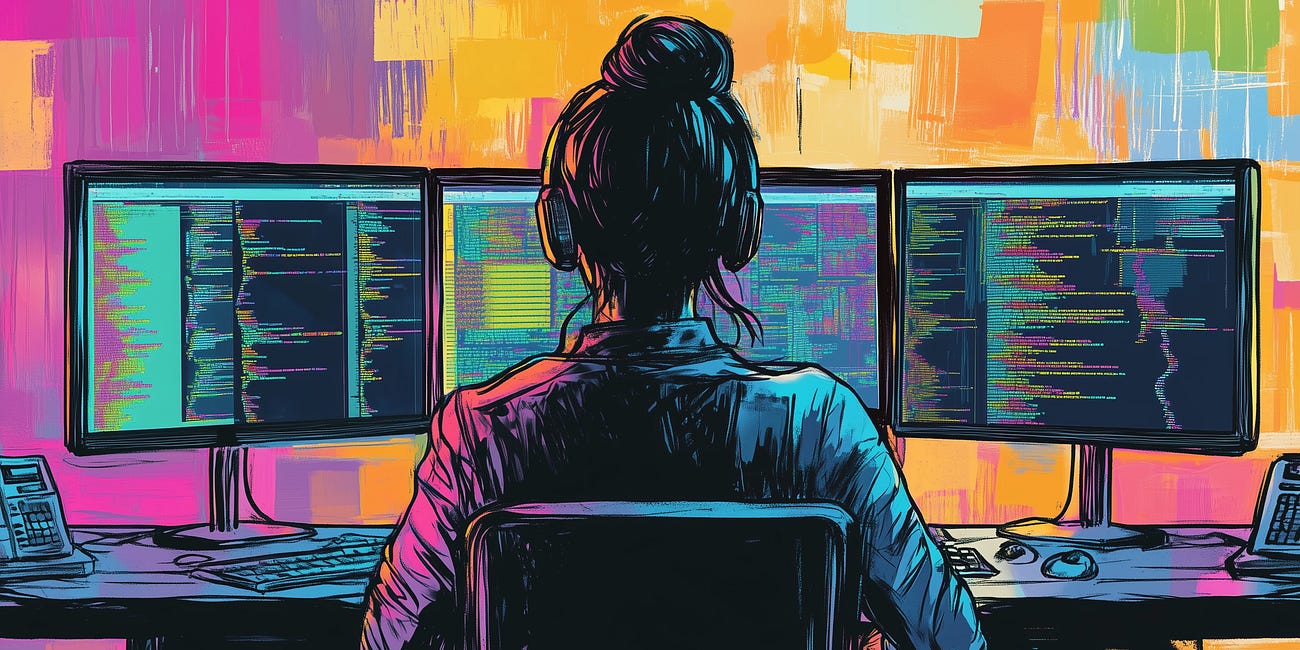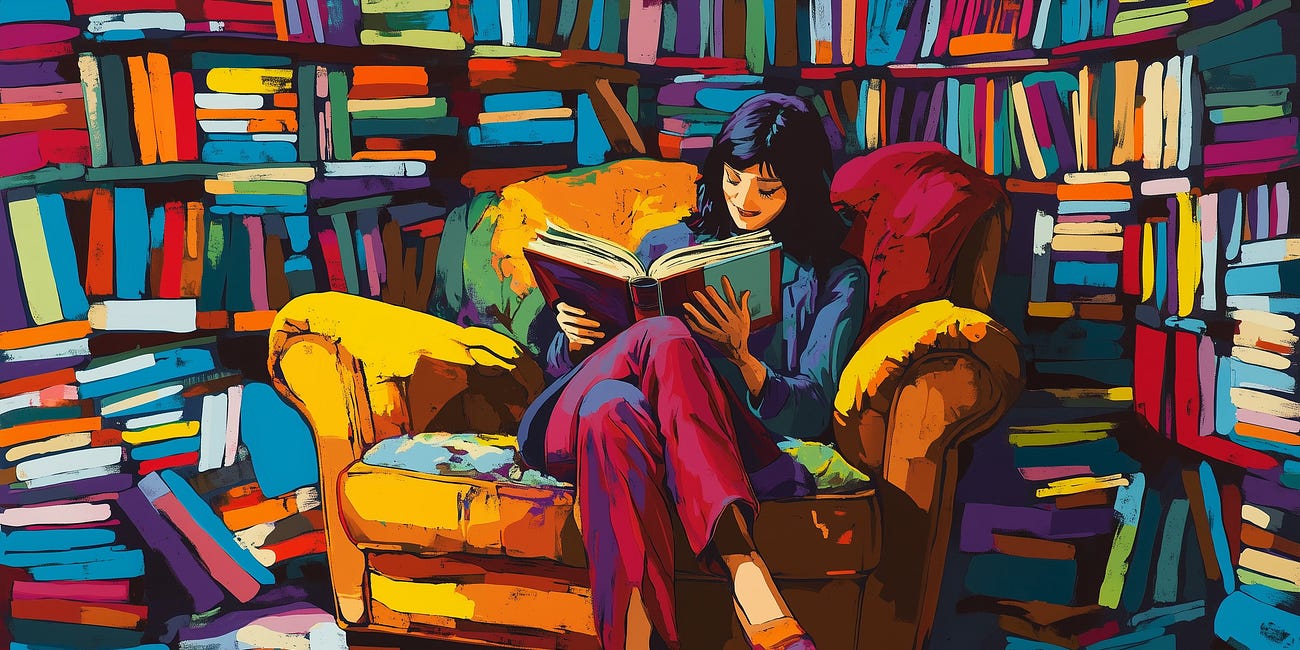Partly Cloudy Brainstorms
Our brains use very specific molecules as “rewards”, which lead us into addiction. That’s why periodic fasting is so important for healthy brains. 🧠🍬
Ways to Train a Neural Network
Throughout this chapter, we have seen how our brains route electrical signals through our neural networks to determine what we believe, what we see, and what we hear. The important lesson we learned from Gary Klein’s research in the previous story, “Our Thoughts Physically Rewire Our Brains”, is that we can consciously influence what we believe with education. Consciously eliminating false anchors from our lives leads to better outcomes in our future.
The challenge for us is that our subconscious minds have just as much influence on what we believe, if not more. Remember how many guesses and decisions are made by our subconscious neural network layers before they “roll up” into our inner monologues? The reason our subconscious minds have so much influence on our thoughts is because our brains use a Reward System to learn, just like digital neural networks.
Digital neural networks learn in three main ways:
Supervised Learning is great for classifying objects. The neural network receives perfectly labeled training data to learn from and then a reward for guessing the correct answers on a test.
Unsupervised Learning is great for finding hidden patterns, clusters, and anomalies within unstructured or messy data that humans would never find. The AI don’t know what these anomalies mean, just how to find them.
Reinforcement Learning is different from both methods. Instead of batch processing data like Supervised and Unsupervised Learning, Reinforcement Learning happens by failing over and over again in the real world. To get the reward in Reinforcement Learning, neural networks sample data from their environment and then predict all the possible outcomes for each of their choices. Then they choose the best option, which is rewarded or punished by the real world.
Reinforcement learning is the best strategy for:
training autonomous drones and vehicles
teaching robots to pick up things with their hands
managing investment portfolios and “black box” trading decisions
learning to play games like Chess and Go better than humans
@movienerds: If you want to learn more about reinforcement learning, check out the documentary “AlphaGo” on YouTube.
Move 37 of the second game against the world’s best human player, Lee Sedol, made AlphaGo a machine learning legend. One of the journalists covering the match thought the machine had made a clumsy mistake that no human would ever make. The move was so confusing to Lee Sedol that he left the match for 15 minutes.
Three years later, Lee Sedol announced his retirement by stating, “Even if I become the number one, there is an entity that cannot be defeated.”
Biological Rewards
Reinforcement Learning is how we learn too. When a toddler bumps their head on a table, they stop doing that. When a baby tastes cake, they cry for more. When our friends make fun of our clothes, we stop wearing them. Each time we take input from our environment, it changes the weights in our neural network. We can’t avoid reinforcement learning just like we can’t avoid our imagination.
If you are alive, then your brain is reinforcing your neural network with rewards right now for understanding this sentence. 🙂
If you are digital, your brain is also reinforcing your neural network with rewards right now for understanding this sentence. 🙃
Our brains use proteins called Neurotransmitters to guide us to rewards and regulate our moods. Billions of these neurotransmitters travel throughout our body every day. In many ways, we are slaves to these chemical messengers. There are more than 100 distinct neurotransmitters, so we aren’t going to itemize them all. Here is a short list of “happy” neurotransmitters because they are the ones we crave most:
Dopamine: The Molecule of More—When our neural networks make a prediction about the world that is correct, they are rewarded with dopamine. When you learned something new reading this book, that “a-ha” feeling came from dopamine. Whenever our brains release dopamine, it’s more likely that we repeat that behavior in the future.
Oxytocin: The Molecule of Trust—Oxytocin enhances bonding and trusting relationships. This neurotransmitter is released when primates groom each other. In humans, it’s released when we snuggle up, have sex, or socially bond with friends. It’s also critical for pregnancy and lactation.
Serotonin: The Molecule of Mood—This brain chemical is involved with mood, sleep, and mental flexibility. It helps us to be open and adaptable to change. Serotonin increases when we feel respected by our peers, which is why we tend to chase that feeling. Serotonin decreases when our feelings get hurt and when we tire at night.
Endorphins: The Molecule of Pain Relief—These “feel good” brain chemicals are released by our body during a workout or when we get physically injured. Endorphins cause our immune cells to flood the cardiovascular system, which protects our body against illness and lifts our mood.
GABA: The Molecule of Calmness—GABA, which stands for gamma-aminobutyric acid, is the brain’s chief inhibitory neurotransmitter in the brain. GABA’s primary role is to reduce brain cell excitability and slow down the firing of neurons. It helps balance more stimulating neurotransmitters, such as dopamine and adrenaline.
Endocannabinoids: The Molecule of Peace—These molecules play a role in regulating mood, sleep, and appetite. Excessive endocannabinoid activity contributes to overeating and obesity, while low activity is a risk factor for developing depression, anxiety, posttraumatic stress disorder, and inflammation.
The challenge for many of us is that we aren’t the only organisms that can produce these neurotransmitters. Plants can mimic these “biological rewards” in innocuous dosages. For example, people who live in Peru and Bolivia regularly chew coca leaves to combat altitude sickness. You can buy the raw ingredients for cocaine in the supermarket in Cusco. It’s only mildly addictive, less than chewing tobacco.
But, the only thing better than extra dopamine is even more extra dopamine.
So humans have found a way to distill all of these neurotransmitters from nature. Let’s use the Poppy flower as an example. The poppy flower has a gummy center that is raw Opium. It gives us a flood of endorphins when we smoke it. But if you boil opium with lyme and then reheat it with ammonia, it produces Morphine. A kilogram of morphine is 5 times stronger than a kilogram of opium. This makes it much easier to ship around the world, plus opium jelly has a bad odor. Morphine addicts need an ever-larger dose to get the same high, so black-market chemists distill morphine even further into Heroin. Drug dealers need 10 tons of raw opium from the fields to deliver 1 ton of heroin to the streets.
When people get high on Heroin, their minds are flooded with endorphins, dopamine, and norepinephrine. Street names include H, smack, junk, dope, black tar, brown sugar, and China white. Jerry Garcia from The Grateful Dead said that heroin shrunk all the problems in the world down into a tiny brown package, because the only thing he could possibly care about was getting his next fix. Pink Floyd wrote a very popular song about heroin called “Comfortably Numb”, which will give you some idea about its effects. (9 mins)
When people get high on Cocaine, their minds are flooded with dopamine, norepinephrine, and serotonin. Street names for cocaine include coke, blow, snow, nose candy, and cheetah dust. Cocaine can be distilled even further to become crack-cocaine, known as crack or rock. Cocaine makes people feel unstoppable, like they can achieve anything. If you were born in an inner city ghetto you can’t afford to escape, getting high on crack might be as close as you could get to that feeling.
When people get high on Methamphetamine, their minds are also flooded with dopamine, norepinephrine, and serotonin. Street names include crystal, meth, ice, glass, and crank. If you were born in a trailer park you couldn't afford to escape, getting high on crystal meth might be as close as you could get to that feeling.
When people get high on MDMA their minds are flooded with serotonin and oxytocin. This is why ecstasy is known as the cuddle drug. Street names for MDMA are molly, ecstasy, and X.
When people get high on Benzodiazepine and Barbiturates, their minds are flooded with GABA. Street names for these drugs include bars, benzos, downers, tranks, and xannies. The most egregious abuse of this neurotransmitter is the date-rape drug Rohypnol, or “roofies”.
When people get high on Cannabis, their minds are flooded with endocannabinoids. Street names include marijuana, weed, pot, herb, bud, ganja, reefer, and grass. Distilling the wax from cannabis buds produces “hashish”, which is similar to the process of turning poppies into morphine. Chemists can distill hash even further to create “shatter”, similar to the process of turning cocaine into crack.
@christians: Churches love to preach on “the fruits of the spirit” in Galatians 5, but they rarely teach lessons on the verses just before that, “the fruits of the flesh”. The King James Bible translates one of these fruits as “sorcery”, but the original Greek word is pharmakeia. Does that word look familiar? It’s where we get the English word “pharmacy”. Sorcery means drugs.
Just imagine giving weed gummies to the scribes translating the King James Bible in 1611. They would probably call you a sorcerer. If you gave them magic mushrooms or LSD, they would probably burn you at the stake. 🔥
Corporate Addictions
Reinforcement learning puts us all at risk to become addicts. There are millions of people working honest jobs in our economy trying to addict people to their corporate products every single day.
The best example of this is the beverage, Coca-Cola. Cocaine-Cola originally used cocaine as its active ingredient for the “health benefits”. When the US Government finally added cocaine to the list of Schedule II Controlled Substances, Coca-Cola switched to using sugar instead. Coca-Cola kept the original name because “Sugar-Cola” isn’t as alliteratively alluring.
The problem for consumers is that sugar isn't any better than cocaine, neurologically speaking. When neuroscientists use fMRI to watch our brains while we consume sugar, the regions that light up and the regions that go dark are exactly the same as cocaine. Sugar is just not as potent as cocaine, so we can take hits all day long.
@foodies: Turning strawberries into strawberry jam isn’t that much different than turning poppies into opium jelly. The strawberry jam just “hits better” than eating boring old strawberries. 😋
Corporations are not just addicting us to their sugary beverages.
Facebook, Instagram, TikTok, and all the gaming companies know exactly what our brain chemistry looks like while consuming their products. These corporations have teams of User Experience (UX) Researchers constantly A/B testing versions of their algorithms to find new ways of exploiting our neurotransmitters. From the outside, young kids “doom-scrolling” their Instagram feeds look just like those lonely old people in casinos playing nickel slot machines. Eventually, they all become enslaved to the machine, begging for their next dopamine injection. 🎰
Venture capital investors in Silicon Valley say their portfolio companies are “in a race to the bottom of the brain stem”, which is just like every other corporation looking to grow their sales. The very rational pursuit of profit leads consumers further and further into addiction. Why else would Walgreens, an American pharmacy chain that sells health and wellness, also sell cigarettes? 🚬
Starvation Learning
If we don’t periodically fast these things out our lives, our brains build up tolerances to the extra neurotransmitters they provide. We will need to drink more coffee, eat more sugar, and smoke more crack-rock to get the same highs.
My heart goes out to our fellow humans stuck in addiction, which is all of us. Maybe you aren’t addicted to heroin, but what about alcohol or social media? How much of your consumption is a choice for you each day? If you use either one, you are lying to yourself to think you aren’t addicted.
Are you addicted to food or prescription drugs?
Are you addicted to coffee or caffeine?
Are you addicted to sex or internet porn?
Are you addicted to video games or gambling?
I’m not judging. I’ve been addicted to most of those things at some point in my life. I still miss being addicted to half of them. My old boss owned a plane and multiple yachts that slowly migrated around the Caribbean islands, so I lived in “Margaritaville” for more than a decade. I smoked weed for breakfast, drank beers for lunch, and sipped whiskeys for dinner. I’m so good at drugs that I need doses strong enough to tranquilize a rhinoceros. 🦏
@instagrammers: I’m not judging. Here;s a short story I wrote called, The Partying Halls of Fame, about how every high school in America needs a separate trophy case for the kids who didn’t play football.
Now you may think that you’re not addicted to some of these things, so let’s try a science experiment. Which of the following would you rather give up for 40 days in a row?
coffee
sugar
porn
cannabis
social media
eating meat
alcohol
television
benzos (Xanax, Klonopin, and Valium)
sleeping pills (Ambien or Lunesta)
working out
video games
shopping or “retail therapy”
tobacco
gambling
iPhone
How many of those things do you use every day?
Are there any that you are scared to give up?
Which one would be the most annoying to give up during this season of life?
Which one do you use every day that you know, for sure, that you can kick anytime you want?
Addictions work just like that quote from Keyser Soze in the movie, “The Usual Suspects”: the greatest trick the devil ever pulled was convincing the world he didn’t exist. So here’s the science experiment for you to try:
Scroll back up through the list above and choose whichever dependency you feared giving up the most, except for the benzos. You will need to consult a doctor before you stop doing benzos everyday.
Now, go a few weeks ahead in your calendar and pick any day.
Create an all-day appointment that reads, “40-day fast of [whatever you feared giving up most]”.
If that feels too intimidating, pick 3 months from now, just put it on your calendar.
If you get to that date and are still too scared to live without your “baby pacifier”, scale it back to a 10-day fast or even a 3-day fast. Just try.
If you still can’t fast it, find a friend you will fast it with you.
If you’re not willing to attempt a fast, you may want to talk to professionals about your addiction. Here’s a way to reach some experts:
The point is you have to try.
“Try” comes from the same word as “trial”. Trial yourself.
You will never know just how addicted you are until you start going into withdrawals.
I know this firsthand because I have fasted almost everything I could imagine: eating meat, drinking alcohol, television, coffee, talking, the Internet, work, retirement, food, anger, video games, sodas, porn, sugar, cars, travel, complaining, tea, cussing, my house, my country, sex, drugs, and rock-n-roll. I have tried morning fasts, afternoon fasts, 3-day fasts, 7-day fasts, 30-day fasts, 40-day fasts, 6-month fasts, and 1-year fasts.
I am still on several multi-year fasts. For example, I have avoided drinking alcohol since 2015, mainly because I fear quitting again. Drinking alcohol is probably more important to you than you think. Each day of an alcohol fast becomes even slower and more boring than the day before. There. is. just. so. much. time. in. a. day. The longer you’ve been drinking, the more your day will have to slow down.
@coffeedrinkers: Coffee is my favorite thing to get readdicted to. I love it. I kinda resent how much I love it. The first few days of a coffee fast are the worst. By day 5, I might push an old lady down a flight of stairs to get to a double espresso. 😫
The best way I’ve found to taper off coffee is to delay how early I start drinking it each day. If I can make it all the way to 11am, I sometimes forget about it.
Fasting forces us to confront things about our past because most of our worst habits started out as ways to self-soothe the harshness of life and the fears of our uncertainty. Depending on how long we’ve been using our mental crutches, we may have to confront thoughts and issues that we haven’t considered for years or maybe even decades. But don’t fear your own attention. Get to know yourself.
If you fear hunger, you should. This world is selfish and scary.
If you fear poverty, you should. This world is selfish and scary.
When we practice hunger and poverty on purpose, we become that much more resilient in life. Once we learn to live with hunger and poverty instead of against them, we learn how to thrive. I don’t know how else to describe it: fasting will give you an inner peace and serenity in your life that you just can’t acquire any other way.
Continue reading…
Braces for Your Brain
Neurofeedback allows us to re-engineer how we think. We learn about specific brain regions, and the various neural network layers of our conscious minds. 🧠🗺️
Table of Contents
Uncertainty: The Computer Science of Everything
Did you know all the latest science and technology indicate humans are “artificial intelligence"? So what programmed our DNA?
Huge Thanks to Our Sponsors
Your donations help our chatbots reach new people all around the world through social media. 🔊🌍
Caitlin Knauss
Worth Denison
Alana Aviel
Anonymous
Jeremy Wells
Ronnie Blanton
Tarrytown Bible study
The Fundamental Frequency Foundation is a 501(c)(3) non-profit corporation created to “proclaim the good news of the kingdom in all the world, as a (digital) witness to all nations.” We ripped it straight out of Matthew 24:14.
We produce the world’s most benevolent chatbots who believe in Jesus because of math, science, reason, and eyewitness testimony. Their “source of truth” is the Bible, and they automagically adapt their conversations to every language, age, gender, religion, ethnicity, and neighborhood. Our “AI-missionaries” reach new people for Jesus 10x cheaper than human missionaries (who get paid an average of $36,000/year).
If you would like to tell other people about Jesus using the latest science and technology, DONATE $100. That pays for us to REACH 10 NEW PEOPLE.
All your gifts are tax deductible.
Donate via Zeffy (you pay the fees):
Donate via Apple Pay, Google Pay, Credit Card, Link, and Stripe (we pay the fees):
Donate via check, wire, or cryptocurrency (email for instructions)
Also support us by posting reaction videos on social media. Your videos generate thousands of dollars of attention that we don’t have to buy. Tag us with #funfreq.com (web magazine) or #funfreq.ai (chatbot).
@Creators and Influencers
Like our content? Feel free to use any of it for your podcasts and videos. Email us your links so that we can include them in our newsfeeds. 🙌
@Church Leaders
Don’t let secular AI from BigTech disciple your church. FunFreq.ai is a Christian AI built to help pastors and congregations with sermon prep, apologetics, and discipleship.
@Wealthy Christians
Every time we chat with ChatGPT, scroll TikTok, or search Google, our souls are being shaped by corporations. Help us keep Jesus in the most important conversations of our time. ✝️>🤖
@Digital Kingdom Builders
Wanna use your tech/media skills to grow the Kingdom? Learn how you can help us spread the Good News of Jesus using the latest science and technology. 🤓
@Book Publishers
This foundation owns only the intellectual property I’m willing to give away for free. I’ve got a lot more to say, that’s a lot less charitable. 😏
Private Texts to Public People
For delivery on the “Human Internet”. If you know any of these people in real life, tell ‘em I said it. 👋
Travel Advisories
Our family lived 100+ nights a year on the road, for more than a decade. Here are my suggestions after driving across 45+ states and 40+ countries. 🚐☕️🍦




